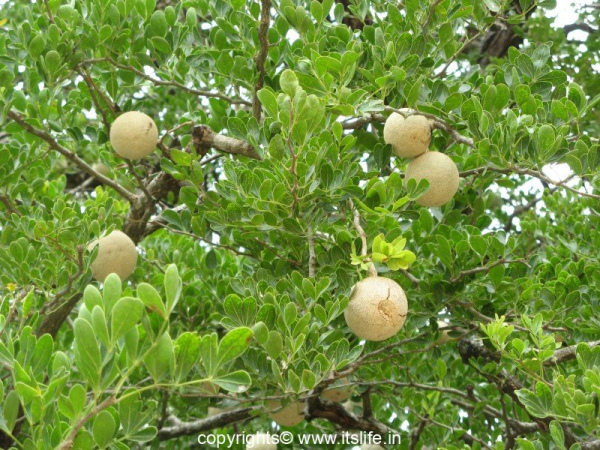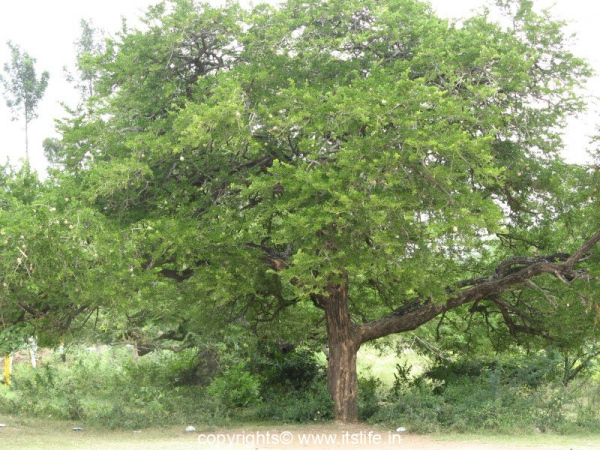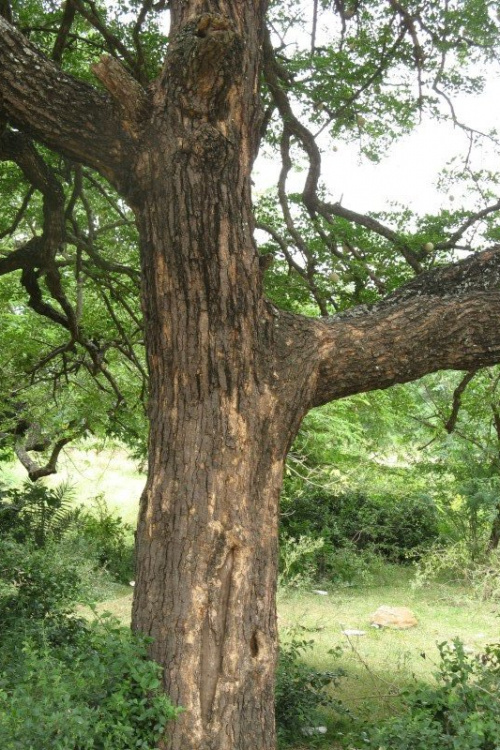The other common names of Wood Apple are Stone Apple, Elephant Apple, and Monkey fruit. The botanical name is Limonia acidissimia and belongs to Rutaceae (citrus) family. Wood Apple tree is a deciduous tree and native to Bangladesh, India, Pakistan, Sri Lanka, and southeast Asia east to Java.
In Kannada it is known as Beladahannu, Vellaga Pandu in Telugu, Velam Pazham in Tamil, Katbel in Bengali, Kaith in Hindi, Kotha in Gujarati, Kovit in Marathi, Kapittha in Sanskrit.
This tree often gets confused with Aegle Marmelos also known as Bilva Tree in Hindi. Though both trees are of the same family but of different species. The Bilva leaves are offered to Lord Shiva.
Whereas the wood apple tree is grown for its fruit. The tree is erect and grows to a height of 20 to 30 feet. The bark of the tree is ribbed and scaly. Sharp spines cover the bark of the trees.
The leaves are green, alternate leaves, and are lemon-scented when crushed.
The flowers are yellowish green with a tinge of red.
The fruit is edible and is round or oval and can range from size 1 inch to 10 inches.
The outer layer of the wood apple is hard.
Inside the pulp is off-white when raw and becomes brown when ripe.
The pulp is sour and sweet.
Many seeds are found inside the pulp and they are edible and adds a delicious crunch.
Propagation is done by seeds and cuttings.
The fruit has many medicinal properties and is used to treat ailments. The fruit is high in fiber, vitamins and all other nutrients that are essential for the human body.
Recipes using Wood Apple:
Wood Apple Juice – Beladahannina Panaka
Wood Apple Sweet Dish – Beladahannina Sihi
Wood Apple Chutney
Wood Apple Chaat (Bhel)




